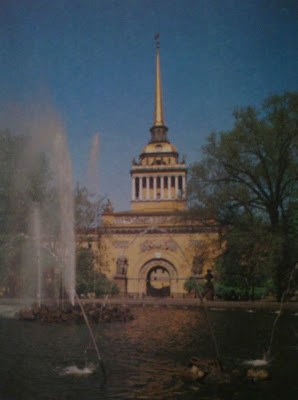
This magnificent building, one of the supreme achievements of Russian Classicism, is the architectural and compositional pivot of the city. Its present-day look took about a hundred years to achieve. Construction of the first Admiralty (a fortified shipyard) was begun in 1704. The second was designed in stone by Ivan Korobov and erected between 1727 and 1738. The existing Admiralty building was put up in 1806 – 23 to the design of Adrian Zakharov.
In the second half of the 19th century the territory of the former shipyard was taken up by residential buildings which shut the Admiralty off from the Neva embankment. Access to the Neva is through the archway of two symmetrically situated pavilions.
The main façade runs parallel to Admiralty Prospect; in the center of the building is a graceful tower topped by a gilded spire (72.5 meters high overall) with a weathervane in the shape of a caravel on its tip. The central and side facades are decorated with multi-columned porticos.
An integral part of the Admiralty’s architecture is its sculptured décor which accentuates the building’s main creation reason – navigation and shipbuilding. The central relief on the attic is entitled “The establishment of fleet in Russia” (by Ivan Terebenev). Flanking the central arch are two sculptural groups of sea nymphs supporting the Earth’s sphere. On the top corners of the tower’s lower cube are four statues of classical heroes and military leaders – Achilles, Ajax, Pyrrhus and Alexander the Great (by Teodosius Shchedrin). The columns of the upper cube are surmounting by statues personifying the four elements – fire, water, air and earth, the four seasons of the year – spring, summer, autumn and winter, and the four winds – south, west, north and east.. Also placed here are the figures of Isis, the patroness of seafaring, and Urania, the goddess of astronomy (by Stepan Pimenov and Shchedrin). The low reliefs adorning the four porticos were executed by Terebenev.


No comments:
Post a Comment